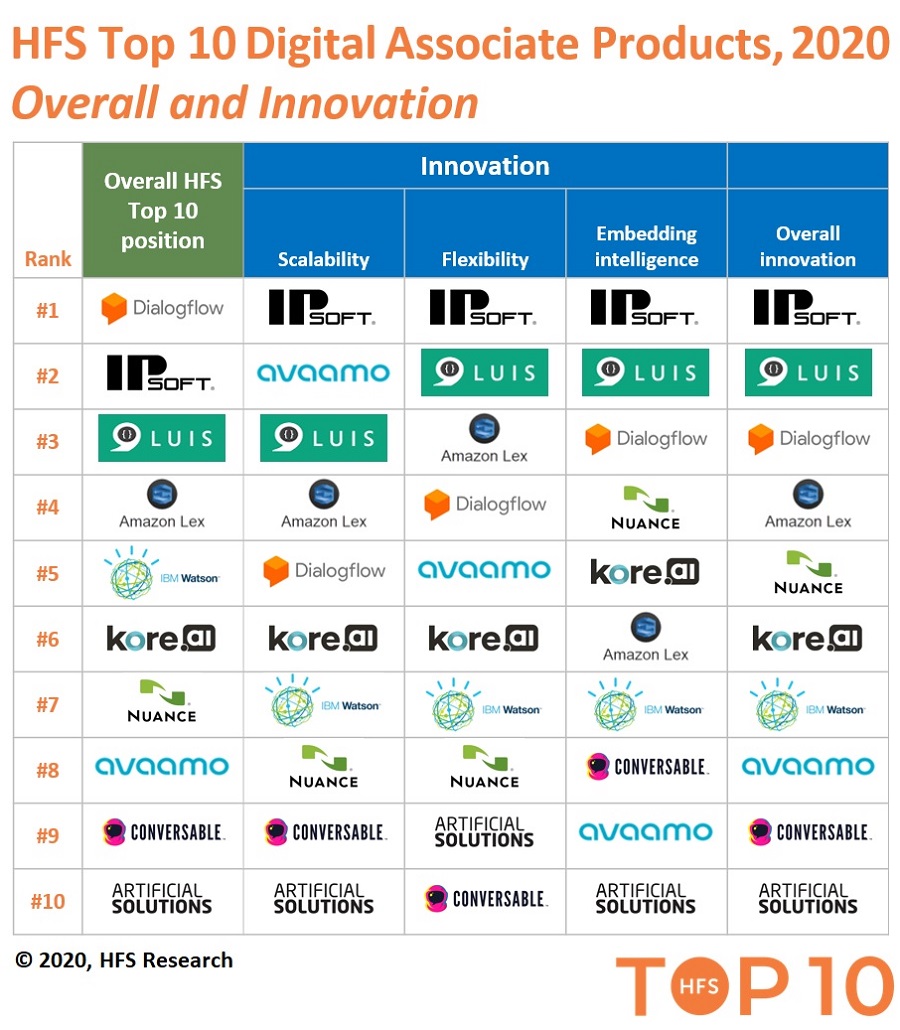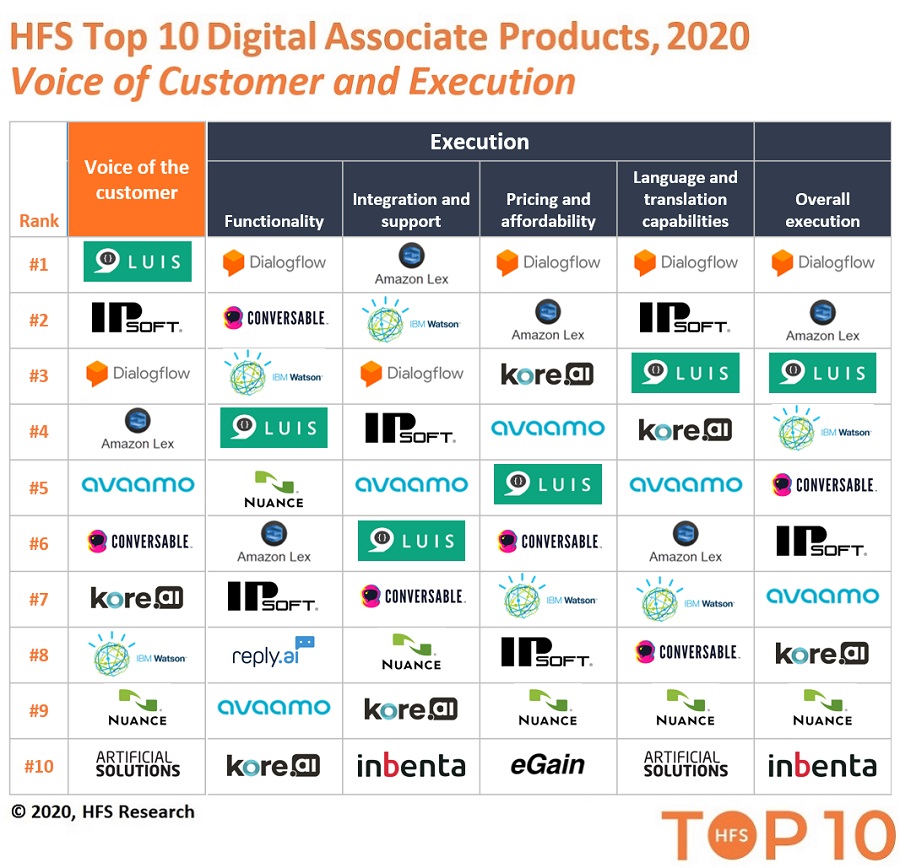Sometimes platforms smolder, sometimes they burn, and sometimes they even rage with flames… and one example that’s genuinely flaming in this current paradigm shift is the world of chatbots and their more sophisticated cousins, Digital Associates. With this urgent need to augment customer-facing services with the locking down of call centers and corporate offices across the world (or even just keep them functioning at all), to keep IT help desks operating, or even internal needs such as basic finance, procurement HR and payroll services, the opportunity to have digital “workers” with whom to engage is in high, high demand.
Our analysts Melissa O’Brien and Emily Coates have released introduced our first Digital Associates top ten products report, which ranks and analyzes 13 of the leading tools on the market for creating these conversational tools we call digital associates.
Melissa, which products have the capabilities to develop really effective digital associates, and quickly?
Our recent report analyzed voice of the customer feedback on the most important elements of enterprise products and platforms for developing digital associates, from functionality to the ability to embed intelligence. The 13 software products we have included in this study highlight the vendors that play in the three most important ecosystems for digital associates: developer tools and platforms, enterprise products, and niche products:
I am assuming, in today’s environment, ease of deployment trumps intelligence?
At this moment, the most important element for digital associates is the ease of use and relative ability to get up and running quickly. Google’s Dialogflow scored at the top overall and also is #1 for ease of use and functionality. Our VOC survey respondents indicated that the ease of implementation was a major strength for Dialogflow and its “out of the box” capabilities that are able to be quickly plugged into communication channels like Slack and Twitter. Runners-up for ease of use were Conversable and IBM Watson, where pre-trained modules and solid UI make it easier for users to stand up the DA’s in shorter amounts of time.
The pandemic will drive adoption of digital associates in the short term, and enable a greater acceptance of them as communication tools as part of business strategy in the future
Since the outbreak, there have been a plethora of chatbots that stood up in varied use cases. Perhaps the most felicitous ones we’ve seen have been the Coronavirus ‘self-checker’ bots created, which are actively in use in chat functions by major health organizations. We’ve also heard of digital associates being deployed by HR departments to run through work from home ‘checklists’ with employees. And as the rush to work from home begins to stabilize, we’ve also been hearing a lot more about customer-facing bots being deployed for contact deflection in customer service functions.
In the coming weeks and months, we’ll continue to see companies of all shapes and sizes rustle up some digital bandaids to throw on a very big wound. At some point when the dust settles and a new normal emerges, companies will be re-assessing and designing everything from their customer engagement models to BCPs to internal processes. And that’s when it will become clear that a digital-first approach is likely the easiest, most sustainable and least “disrupt-able” approach for many processes and communications.
And, it’s also the time that the ease of use for digital associates will become hygiene and digital associates tools will need to be agile and intelligent. This is where vendors’ investments in creating digital associates tools that can adapt quickly, learn and apply more advanced techniques like sentiment detection. A standout in the innovation category is IPsoft, which ranked at the top across the board all innovation categories of embedding intelligence, scalability, and flexibility. Dialogflow is well poised to rise to the challenge as well, with powerful abilities for modeling large and complex flows using intents and contexts.
The Bottom Line: A ‘digital first’ approach could become the post-pandemic new normal. The tools that are being quickly developed now need the potential to become more intelligent.
As companies start to move out of survival mode, we will start to see a much more strategic use of emerging technology. People need to start thinking in new ways – not just about today’s problems at hand – but also about responding to future disruptive events in a way that uses important technological tools like digital associates in effective ways.
HFS Research premium subscribers click here to download your copy of the Digital Associates top ten products report
Posted in : Artificial Intelligence, Customer-Engagement, HR Strategy, intelligent-automation, OneOffice







